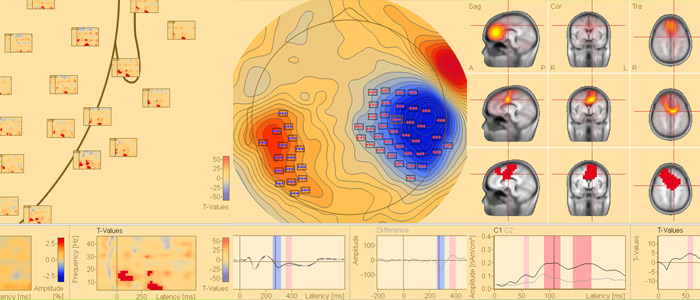| Current Collaborations |
Contact |
|
|
 |
|
| In a joint PhD project with Prof. Christian Uhl at the Hochschule Ansbach, BESA is investigating methods for improving the analysis of epilepsy data using non-linear methods for the physiological modelling of epileptic discharges. The project is part-funded by the Bayerische Forschungsstiftung. |
www.hs-ansbach.de |
|
|

|
|
| TTogether with mBT we believe that a great breakthrough is just around the corner as the EEG was never so easy. When you bound BESA and mBT you can perform EEG everywhere at any time with superb quality and you can analyze it and interpret it as you used to. With the 64-channel EEG system that is compatible with BESA you can perform perfect EEG source analysis, connectivity, and more with the level of confidence that was available only in the lab until now. Together with mBT we are working closely to move this even further and having fun at the same time. Check: #EEGinEveryday
|
mbraintrain.com |
|
|
 |
|
| Together with the people at BrainBox, BESA is working on an optimal integration of NIRS, TMS, and DCS with EEG data. We are addressing the challenges of smooth integration between the modalities as well as artifact treatment and analysis strategies. |
www.brainbox-neuro.com |
|
|
 |
|
| BESA and the teams around Prof. Maureen Clerc and Dr. Juliette Leblond at INRIA (Nice) started a PhD project together on determining individual conductivity values from EEG measurements and other complementary modalities (MEG, EIT, …). Importance of detailed volume conductor modeling and mathematical aspects, such as uniqueness and optimality of the conductivity estimation, will be investigated. Furthermore, a reliable procedure for the estimation will be developed. |
www.inria.fr |
|
|
 |
|
| In a joint PhD project with Prof. Joachim Gross, BESA is comparing different functional and effective brain connectivity methods. Advantages and disadvantages of each method will be determined by analyzing simulated and realistic sets of EEG/MEG data. The most reliable method will be chosen on the basis of various relevant performance indicators and will become part of the software package BESA Research. |
www.gla.ac.uk |
|
|
 |
|
| In a joint PhD project with PD Dr. Carsten Wolters, BESA helped developing the most state-of-the-art FEM workflow for EEG and MEG source analysis – BESA Poster OHBM 2014 – Benjamin Lanfer. The output of the PhD found a direct application in the popular program BESA MRI. |
www.uni-muenster.de |
|
|










Recent Comments